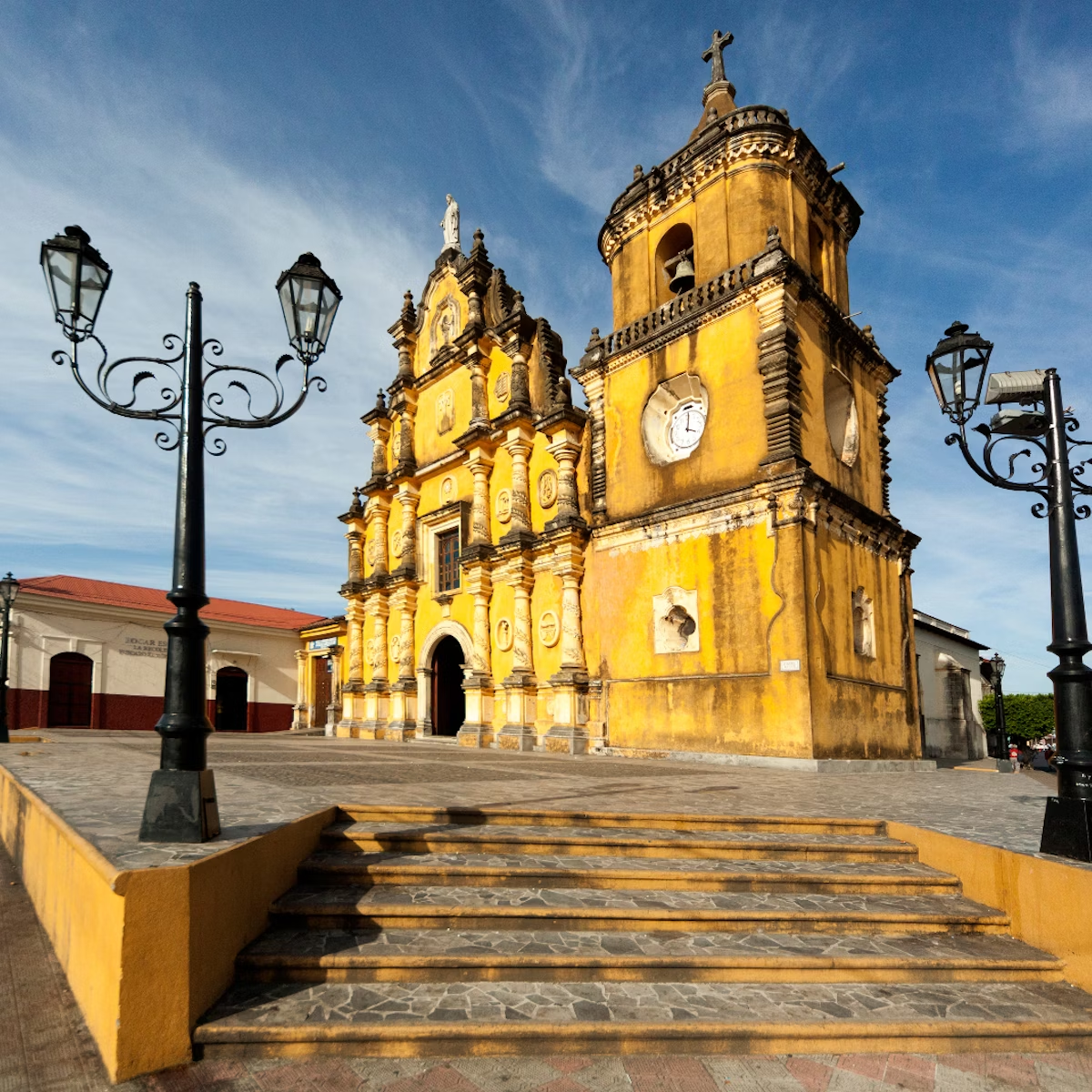Buried and lost for over 300 years, this was Nicaragua’s first capital – a rough-and-ready settlement that some say was doomed from the start. Founded in 1524, the town was governed by unusually cruel and money-hungry tyrants, whose public spectacles included beheadings and setting wild dogs on captured natives in the central plaza.
Tour outfits in León arrange visits to León Viejo (US$45). Buses run hourly between León and La Paz Centro (US$0.80, 45 minutes), meeting Puerto Momotombo buses (US$0.50).
According to local legend, divine intervention played at least a part in the series of earthquakes that shook the town from 1580 to 1609, culminating in the eruption of nearby Volcán Momotombo (1280m) that buried the city under ash in 1610.
The Spanish fled, carrying whatever they could with them (including La Virgen de La Merced), and settled in present-day León, and the old city began to fade from memory.
Fast forward to 1967. After years of searching and theorizing, archaeologists from León’s UNAN university finally located the old town, unearthing its chapel and central plaza (and the headless remains of Francisco Fernández de Córdoba, founder of both León and Granada, beneath it).
In 2000 it was declared a Unesco World Heritage site – Nicaragua’s first – and excavations have continued (funds allowing). This is not Machu Picchu – most walls are about 1m high and you need a fair bit of imagination to see that there was once a city here – but it makes for an interesting day trip, more than anything for the evocative commentary provided by onsite guides.
León Viejo is a compact grid bisected by the main Calle Real. Those condemned to be beheaded were led along it to the execution spot on the Plaza Mayor, now marked by the Monumento a la Resistencia Indígena. Don't miss the remnants of a fortress on a small hillock, just southwest of the plaza; unobstructed views of the Volcán Momotombo are stupendous.
Admission includes a Spanish-language guided tour, but detailed signs are also in English. The best time to visit is the second Sunday in November, when La Virgen de La Merced leaves her comfortable new church and, leading a procession of the faithful from La Paz Centro, revisits her first home in the New World.
Tours from León can be combined with a hike to the top of Cerro Negro (726m) and/or a cool swim in Laguna de Asososca, both nearby. If coming by bus, take an early one from León to La Paz Centro to connect with the 8am or 11am bus to the ruins; bear in mind that the last bus leaves Momotombo to La Paz Centro at 3pm. Alternatively, catch a tuk-tuk to the main highway and flag down passing buses. Driving, the turnoff is 10km east of La Paz Centro along NIC-22 towards Estelí. From the turnoff it's 4km down a partially paved road to to Puerto Momotombo; follow the signs to the ruins.
If you continue straight through Puerto Momotombo, however, you’ll quickly come to a less-than-appealing beach scene on Lago de Managua, where a handful of disposable-looking restaurants and a playground enjoy a truly awesome view of Volcán Momotombo, the hydro-electric plant steaming eerily against its naked red and black slopes, and Isla Momotombito.





